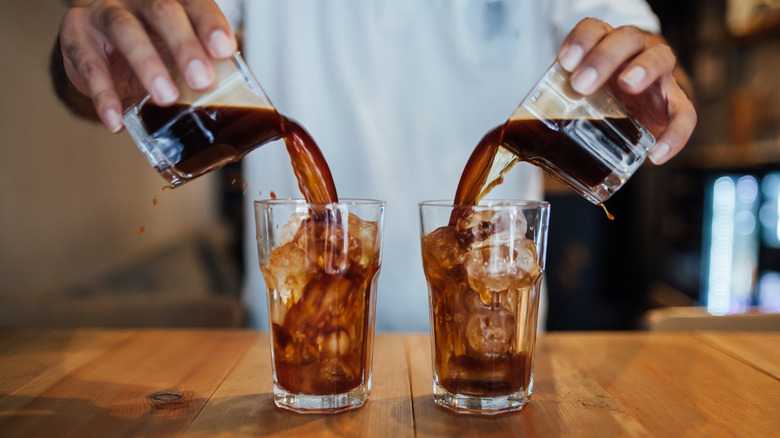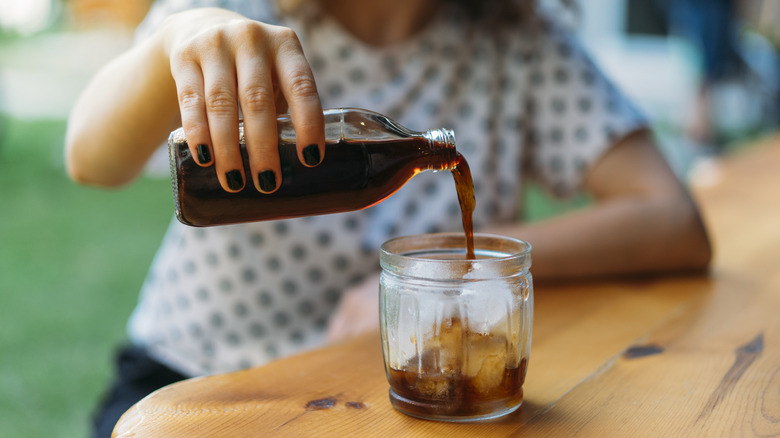There May Not Be An Ideal Coffee-To-Water Ratio To Dilute Cold Brew
Both easily purchased pre-packaged and a stalwart at cafes, cold brew is one of coffee's most convenient formats. Especially on a hot summer day, there's nothing quite like a cup of the full-bodied drink.As opposed to iced-coffee, cold brew is produced without any heat application. The grounds are soaked in water for up to twelve hours, which completely alters how the flavor is extracted. There's typically less acidity, and the resultant brew is much more saturated. Therefore, the seeping yield is not commonly consumed on its own but rather treated as a concentrate.
If you're keen to drink this hyper-flavorful result, no one will stop you. However, more commonly, the concentrate is diluted. Generally, the advice is to mix it in a ratio of anywhere from an even split to two parts concentrate to one part water. There's no set recipe — it all depends on taste — as well as a range of other factors. Let's dive into the details.
Coffee-to-water ratios when diluting cold brew
The most prominent contributor to the dilution variation is the concentrate itself. Every coffee shop or distributor crafts their cold brew with tailored proportions. Usually, it's one part coffee to anywhere from four to eight parts water. The common thread is its potency — as per its name, this brewing method packs in up to four times more coffee than in a hot brew. When combined with other factors like the utilized bean as well as extraction time, the resultant cold brew wildly differs.
As a result, each coffee necessities a different dilution. If purchasing at a coffee shop, start by asking the barista about their cold brew strength. They'll usually happily adjust based on your preference. If crafting cold brew at home, experiment by gradually adding increments of water until finding the sweet spot. And in such an irregular preparation method, some cold brews are prepared not to be diluted at all. There's no right or wrong — simply what's tastiest for you.

